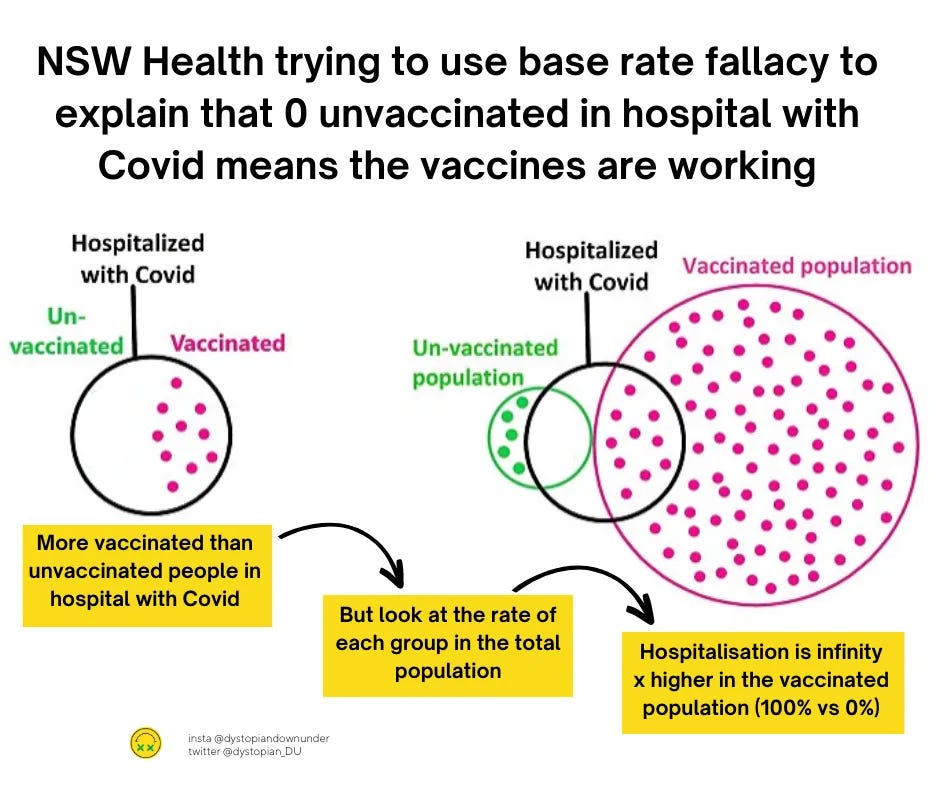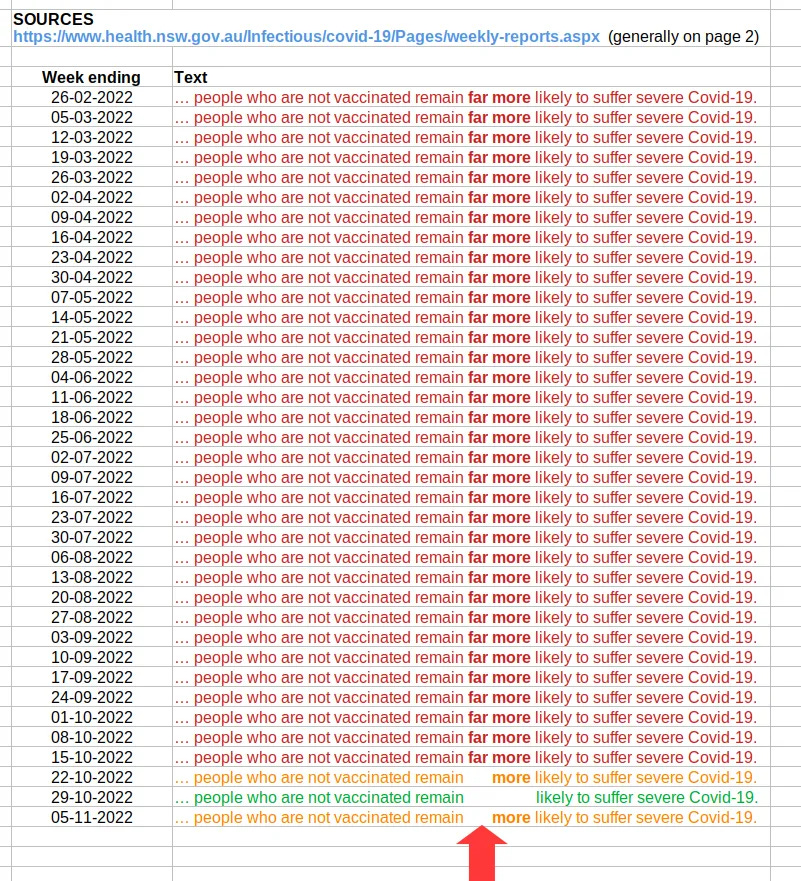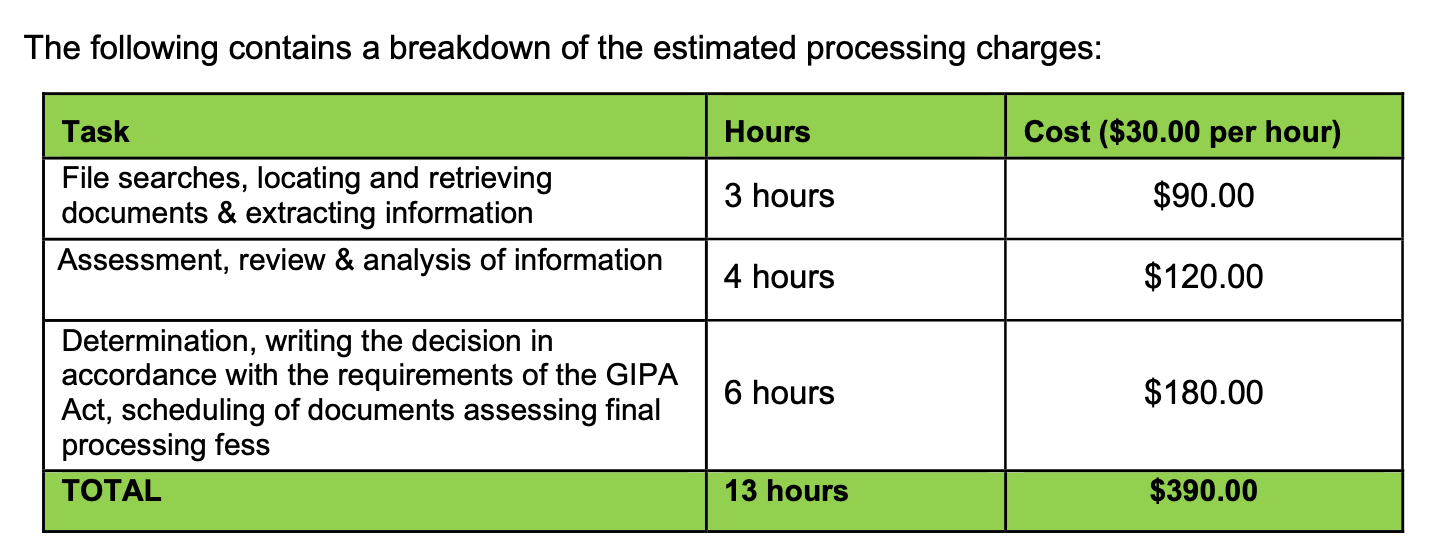NSW Health admits to not using their own data for advice on vaccine effectiveness
Which might explain the bizarre disjuncture between NSW Health messaging and basic reality
Until the end of 2022, NSW Health reported the vaccination status, by dose, of all hospitalisations, ICU admissions and deaths with Covid. The purpose of this exercise was to monitor the effectiveness of Covid vaccines in the real world, says NSW Health.
Source: NSW Respiratory Surveillance Report – two weeks ending 31 December 2022
In the first few months of reporting on outcomes by vaccination status, it was clear - the unvaccinated were not the ones filling up NSW hospitals, and they were not dying at a greater rate than the vaccinated, either.1
Upon reviewing their own data, NSW Health should have taken their foot off the gas and started investigating. Instead, they doubled down on their messaging.
When ICU wards were full of the triple and quadruple vaccinated, a NSW Health official boldly told the Senate that the ICU data showed, “irrefutably,” that Covid vaccines reduce the severity of disease.
In weeks when there were zero unvaccinated people in hospital with Covid, NSW Health resorted to base rate fallacy. The unvaccinated, being a small proportion of the NSW population, were significantly over represented by the number zero.
And in the same weeks that there were zero unvaccinated people in hospital with Covid, NSW Health stated that, “people who are not vaccinated remain more likely to suffer severe COVID-19.”
This statement was adjusted multiple times in the latter part of the year, with the qualifiers, “likely,” “more likely,” and “far more likely”, changing week to week, prompting Twitter pundit and data analyst @LCHF_Matt to ask, why?
In a GIPA request (the NSW equivalent of FOI), Matt asked NSW Health to provide any information to support the statement, “However, people who are not vaccinated remain more likely to suffer severe COVID-19,” as well as any data/documents to support qualifiers (likely, more likely, far more likely) being changed from week to week.
On 14 February 2023, the GIPA office responded (emphasis mine),
“Following through searches conducted by Health Protection NSW, they advised that no information was held by the Ministry within the scope of your application…”
Well that’s weird, because as you’ll recall from the top of this article, NSW Health expressly stated that the purpose of collecting and reporting data on the vaccination status of cases admitted to hospital, ICU and those who died with Covid was to, “monitor trends in the relationship between vaccination and outcomes.”
Yet, NSW Health has no information on file to support the weekly changes to its reported risk of being vaccinated vs. being unvaccinated.
The GIPA decision states that the only information held by the Ministry is what is already publicly available, and includes a link to the federal health department website which lists various international studies and official statements on Covid vaccine efficacy.
The weasel wording of the GIPA response allows for the possibility that an analysis of NSW Health data for vaccine effectiveness is held by another body or Ministry, with weekly directives being given verbally (not in writing) to NSW Health employees to update the fine print on NSW Health surveillance reports. This explanation requires some suspension of disbelief. An alternative explanation is that the semantic fiddles (likely, more likely, far more likely) are an editorial touch, nothing more.
At the end of 2022, NSW Health advised that they would no longer be reporting the vaccination status of hospitalisations, ICU admissions and deaths with Covid. This is because,
“With most of the population having received at least two doses of vaccine and there being differences in timings of booster dosing across different age groups, the trends between vaccines and outcomes cannot be interpreted using these data.”
Source: NSW Respiratory Surveillance Report – two weeks ending 31 December 2022
I ran this through Google translate for Bureaucratese to English (kidding, but wouldn’t that be a good business opportunity?). Here is my the translation:
‘Most of the people admitted to hospital and ICU or dying with Covid are vaccinated, and with the minimal effectiveness of the boosters waning within a matter of weeks, we’re struggling to catch the vanishingly small window of benefit in the data. So actually, we’re going to stop collecting the data. And just because it looks like the vaccines aren’t working, it doesn’t mean the vaccines aren’t working.’
NSW Health assures us that they will, “continue to work closely with the National Centre for Immunisation Research and Surveillance to determine local estimates of vaccine effectiveness through formal data linkage processes and analyses which account for age, previous infection, underlying illness and other factors that impact on these measures.”
What they’re talking about here is linked data, which they have doggedly refused to release to the public to date.
I submitted a request for Covid data stratified by vaccination x age x comorbidities. The GIPA office refused the request, stating that comorbidity data is not held by the Ministry of Health, although they did not advise as to which Ministory or body does hold comorbidity data. They ignored my request for vaccination x age stratified data, redirecting me to the publicly available data which is not stratified per my request. My several follow-ups remain ignored.
I also submitted a request for Covid data differentiating between ‘with’ Covid cases and ‘of’ Covid cases. The GIPA office responded with an estimate of $390 to process my request.
Two parting thoughts.
If NSW Health have data to show vaccine efficacy, why aren’t they releasing it to the public? Why make it so damned difficult for people to extract it from them? It sure would shut the anti-vaxxers and skeptics up if you could show them that the vaccines work - so why don’t they?
I have many FOIs in progress with various different departments. The bureaucratic process involves many emails indirectly avoiding answering your question for several weeks, followed by directives to submit FOIs, linked data requests, and so on over many months, and at the cost of hundreds of dollars per request. For this reason, and because the amount of time I dedicate to this Substack is increasing, I am looking to paywall some of my Substack posts in the near future. It will likely be a 72-hour timed paywall, where paid subscribers get early access, with the content being made available to everyone after this time has passed, because ultimately I want the information that I share to be available to everyone.
I’d like to get a sense of how many of you would opt for a paid subscription for US $5 per month. Please let me know in the poll below. Please also let me know your thoughts in the comments.
NSW HEALTH COVID DATA: THE ARCHIVE
I started reporting on NSW Health data eight months ago because the officials who get paid to do this weren’t doing it. I’ve had the benefit of input from various experts I have met along the way (thanks, you know who you are), which has helped me to tighten up my understanding and analysis of the data over time. The main themes throughout all of these posts are:
The data do not support NSW Health’s claims of vaccine efficacy
The data that would be required to prove or disprove claims of vaccine efficacy has never been made public
NSW Health consistently claims that their own data shows the opposite of what it actually shows, and when asked to prove their claims, they give the impression of obfuscating rather than providing the proof.
A note on Unknown vaccination status cases in NSW Health reporting. Unknowns can account for up to 20-25% of the cases some week, and people understandably get bogged down in trying to explain how the potential recategorisation of those cases into unvaccinated or various vaccinated dose groups would affect outcomes overall. I’ve written a lot about the Unknown cases in the above linked Substacks, which I will summarise here:
Unknown cases are those that have failed to be verified in the Australian Immunisation Register (AIR), vaccinated or unvaccinated. The Unknown category includes vaccinated people who: were vaccinated overseas; have an interstate address; have a misspelled name on their hospital form; have recently changed name (marriage); or whose details do not match the AIR database for any other reason; and unvaccinated people who have no record (eg: an exemption) in AIR.
In one week, a cross-referencing of NSW data confirmed that all cases moved into the Unknown were double or triple vaccinated. Additionally, NSW Health reported that, “Cases between October and mid-December with an unknown status are likely to have received at least one dose, but their record could not be matched with AIR.” Read more about these details, with screenshots, at the bottom of this post.
I also ran the scenario of putting all the Unknowns in the Unvaccinated category, which you can view in this post here. This is a hypothetical scenario, the Unknown group is homogeneous, although we know in reality it’s not from the information in the above point. I simply ran the hypothetical to demonstrate that it doesn’t change the fact that the boosted are over represented in severe Covid outcomes.











I would love nothing more than to support your work by subscribing. It would be worth every cent. I would love to support truth warriors like you. Unfortunately, I lost my job two years ago because I refused the jab and I have been struggling along on my savings ever since. I feel sick to my stomach that I cannot support you and others like you, financially. I am past retiring age, my superannuation is a pittance and it is difficult to find employment in my age group. When I get a job that permits more than a hand to mouth existence, you will be on my list. They really did a number on us.
Hmmpf! I AM subscribed 😇 so I get to ask this: who should be executed for Treason at the Dept of Death?